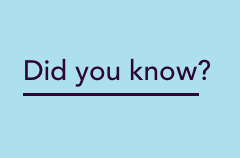The Australian Energy Market Operator (AEMO) has today reached the halfway point in the two-year cycle to develop the next Integrated System Plan (ISP) – the roadmap for investment in electricity generation, storage, and networks needed to meet both consumer needs and government energy and emissions targets between now and 2050.
This milestone is marked by publication of the 2025 Inputs, Assumptions and Scenarios Report (IASR), the Electricity Network Options Report, and the Gas Infrastructure Options Report. Together, these reports will be used in AEMO’s longer-term forecasting and planning activities for the next two years.
AEMO’s Executive General Manager of System Design, Merryn York, thanked the many individuals and organisations that contributed to the extensive consultation process for preparation of these reports.
"More than 1,100 stakeholders contributed input and feedback, including more than 240 individual submissions. This high level of engagement is critical to preparing a well understood and robust ISP,” Ms York said.
“With these key inputs now finalised, AEMO will commence modelling with the best available information to inform the Draft 2026 Integrated System Plan, due for public consultation in December 2025,” she said.
For the 2026 ISP, the breadth of the report’s modelling will expand to implement recommendations from the ISP Review, as endorsed by the Energy and Climate Change Ministerial Council.
This includes identifying, in addition to transmission options, opportunities for investment to facilitate the operation of forecast uptake of consumer energy resources and other distributed resources and better integration of the capability of the east coast gas market.
These recommendations require AEMO to expand the technical scope of the ISP, and consider broader inputs and assumptions, affecting both the ISP Methodology and the IASR.
Inputs, Assumptions and Scenarios Report
The 2025 IASR outlines the scenarios and modelling inputs AEMO will use to plan for future energy system needs and uncertainties.
As with previous ISPs, the scenario planning framework considers a wide range of consumer behaviours, technology trends, and investment signals while achieving the policy settings that Australian governments have set.
Each scenario considers a broad set of inputs and assumptions while applying mandated government energy and emissions policies set out in the Australian Energy Market Commission's Emissions Targets Statement or through other government commitments defined in the National Electricity Rules.
Like the 2023 IASR, the 2025 IASR has three scenarios that span a range of futures for the National Electricity Market (NEM). Each scenario captures different plausible futures for the NEM, with inputs shaped by trends in population growth, electrification, consumer energy resources, and emerging clean energy industries.
This year’s IASR retains three core scenarios, with two of the scenarios’ names updated to better reflect their distinguishing drivers: Slower Growth, Step Change, and Accelerated Transition. Click here to access the IASR summary document.
Electricity Network Options Report
The 2025 Electricity Network Options Report summarises more than 100 potential electricity network augmentation projects across the NEM, ranging from early-stage concepts to advanced actionable projects identified in the 2024 ISP, which are being progressed through the Regulated Investment Test for Transmission (RIT-T) or through jurisdictional approval.
Since the draft Electricity Network Options Report in May 2025, transmission network service providers have supplied further detailed cost data for actionable and future ISP projects, allowing AEMO to cross check using the updated Transmission Cost Database. AEMO has also used the Transmission Cost Database to estimate the cost of conceptual transmission projects which may be needed in the longer term.
For the first time, the Electricity Network Options Report also includes distribution network considerations, expanding the scope of planning inputs to provide a fuller view of system needs.
Investment in the electricity network, along with other investments identified in the ISP optimal development path (ODP), will be essential in the coming years to increase the transfer capacity of renewable energy zones (REZs) and the backbone of the interconnected network.
Due to ongoing global supply chain constraints and workforce shortages, cost estimates for transmission projects have increased significantly – in some cases by up to approximately 100% compared to costs in the 2024 ISP (after accounting for inflation).
"We recognise that higher costs for network development would ultimately affect consumer bills. These revised cost inputs are material, and we will consider them carefully as we model an optimal development path that delivers the most efficient outcomes for consumers, while meeting government energy and emissions targets,” Ms York said.
Previously identified transmission projects that have not progressed to anticipated or committed status will be re-evaluated in the 2026 ISP to ensure the updated investment path remains in the long-term interests of consumers.
Gas Infrastructure Options Report
Contributing new inputs for the ISP, the 2025 Gas Infrastructure Options Report outlines gas infrastructure options and cost components that will inform gas development projections in the 2026 ISP.
The report supports more integrated system planning by helping ensure electricity sector investments – particularly in gas-powered generation (GPG) – are informed by the availability and limitations of gas supply, storage and infrastructure.
“GPG will be important in the energy mix in the NEM. It will support forecast increasing electricity demand and the transition from a power system dominated by coal-fired generation to one with firmed renewables,” Ms York said.
To model the supply, demand and deliverability of gas in the East Coast Gas Market (ECGM) for the purposes of the ISP, AEMO will for the first time apply detailed information consistent with AEMO’s Gas Statement of Opportunities analysis to reflect the capability for GPG to operate given forecast gas supply, storage and pipeline capacity constraints, and considering the residential, commercial and industrial gas demand that is forecast within the ECGM.
AEMO is hosting a webinar on the three reports from 10:30 am to 12.30 pm (AEST) Tuesday 12 August 2025.






